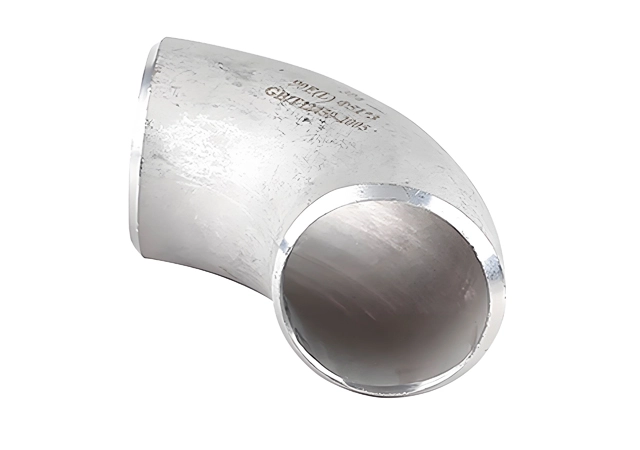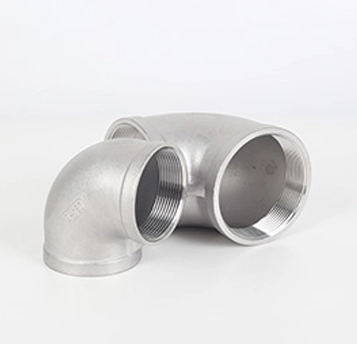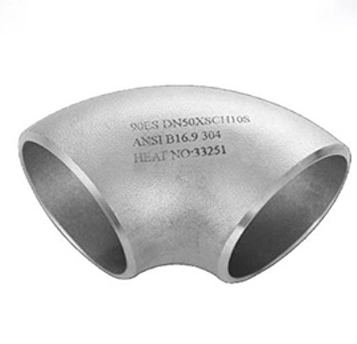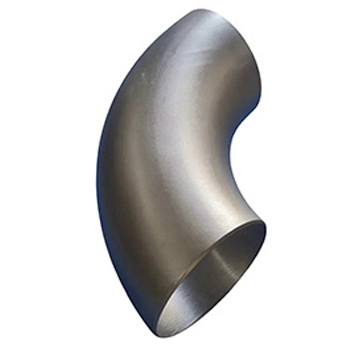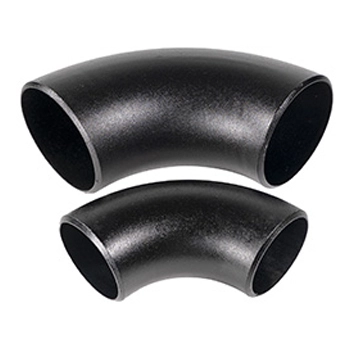A stainless steel elbow is a type of pipe fitting used to change the direction of flow in a piping system. It is made from stainless steel, a corrosion-resistant alloy that contains iron, chromium, and often other elements like nickel, molybdenum, and manganese. Stainless steel elbows are widely used in industries where corrosion resistance, strength, and durability are critical, such as chemical processing, food and beverage, pharmaceuticals, oil and gas, and water treatment.
ASTM A403: Standard Specification for Wrought Austenitic Stainless Steel Piping Fittings.
ASTM A774: Standard Specification for Seamless and Welded Wrought Austenitic Stainless Steel Socket-Welding and Threaded Fittings.
ASTM A815: Standard Specification for Seamless and Welded Wrought Austenitic Stainless Steel Buttwelding Fittings.
Austenitic Stainless Steel:
Grade 304 (A2): Most commonly used grade, offering excellent corrosion resistance and weldability. Suitable for general-purpose applications.
Grade 316 (A4): Contains molybdenum for enhanced corrosion resistance, especially against chlorides and acids. Ideal for marine and chemical environments.
Grade 321: Contains titanium for improved resistance to high temperatures and intergranular corrosion.
Duplex Stainless Steel:
Grade 2205: Combines the properties of austenitic and ferritic stainless steel, offering high strength and excellent corrosion resistance. Used in harsh environments like offshore oil and gas.
Ferritic Stainless Steel:
Grade 430: Less expensive, with good corrosion resistance but lower strength compared to austenitic grades. Used in less demanding applications.
Martensitic Stainless Steel:
Grade 410: High strength and hardness, but lower corrosion resistance. Used in applications requiring wear resistance.
Based on Angle:
90° Elbow: Changes the direction of flow by 90 degrees.
45° Elbow: Changes the direction of flow by 45 degrees.
180° Elbow (Return Bend): Reverses the direction of flow completely.
Based on Connection Type:
Butt-Weld Elbows: Welded directly to the pipe for a seamless and strong connection.
Socket-Weld Elbows: Fitted into a socket and welded for smaller pipe sizes.
Threaded Elbows: Screwed onto threaded pipes for easy installation and removal.
Flanged Elbows: Bolted to flanges for easy assembly and disassembly.
Based on Radius:
Short Radius (SR) Elbows: Have a smaller bend radius, making them compact but with higher pressure drop.
Long Radius (LR) Elbows: Have a larger bend radius, reducing pressure drop and allowing smoother flow.
1. Chemical and Petrochemical Industries:Resistant to corrosive chemicals and high temperatures.
2. Food and Beverage Industry:Hygienic and easy to clean, meeting strict sanitary standards.
3. Pharmaceutical Industry:Non-reactive and suitable for sterile environments.
4. Oil and Gas Industry:Used in pipelines and offshore platforms due to high strength and corrosion resistance.
5. Water Treatment and Desalination Plants:Resistant to saltwater and chlorine corrosion.
6. HVAC Systems:Used in heating, ventilation, and air conditioning systems for durability and corrosion resistance.

 EN
EN

